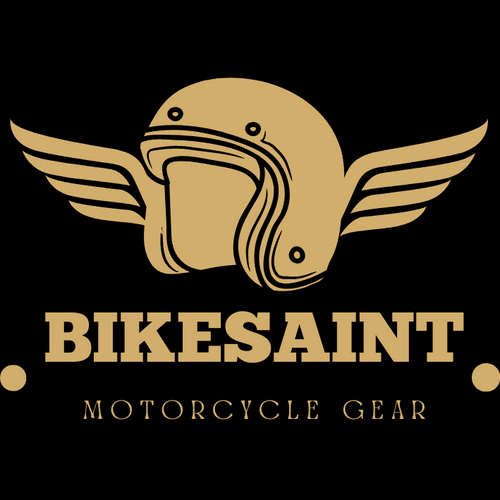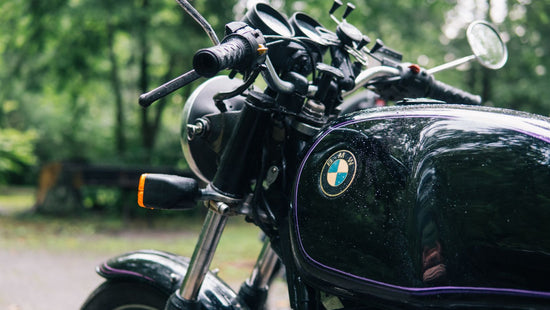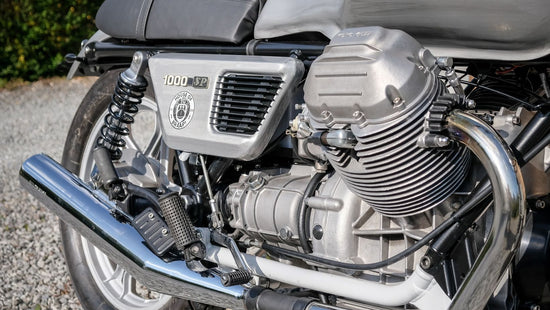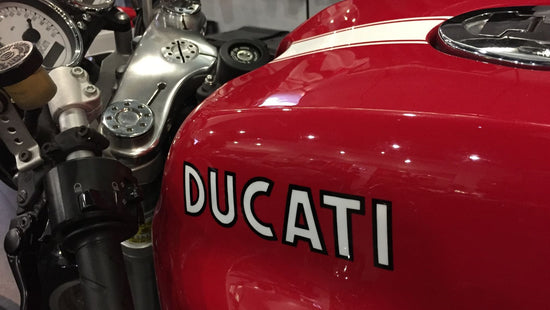

If you're a fan of motorcycles, then you're likely familiar with Triumph Motorcycles, one of the most iconic brands in the industry. For over a century, Triumph has been synonymous with quality, style, and performance, and has become an integral part of the motorcycle industry. In this article, we'll be taking a look at the history and evolution of Triumph motorcycles, from the early days to the present. We'll explore how the company has evolved over time, and discover why Triumph remains one of the most beloved brands in the world. So, let's get ready to ride through history and explore the fascinating story of Triumph Motorcycles.
Early Beginnings
Established in 1902, Triumph Motorcycles ltd was created by the German engineer Siegfried Bettmann. Bettman was a German immigrant from Nuremberg and the company was originally in the business of producing bicycles since 1884. In 1887 the company registered a new name New Triumph Co. Ltd with funding from Dunlop Pneumatic Tire Company. Producing its first motorcycle in 1902 makes Triumph the oldest motorcycle brand with continuous production together with Royal Enfield.
The company’s first motorcycle model was the Triumph No. 1, which was designed for reliability and speed. Over the next few years, the company continued to improve upon its models, creating powerful and technologically advanced motorcycles that quickly gained popularity.
Triumph Motorcycles During World War I
During World War I, Triumph Motorcycles supplied the British Army and allied forces with bicycles, as well as motorcycles for transport, reconnaissance, and despatch duties. This experience led to Triumph becoming a leader in the development of military motorcycles.
Post-War Success and Expansion

In the early 1920s, Triumph moved its operations to Coventry, where the company began producing a number of popular models, such as the Speed Twin. The Speed Twin was the first production motorcycle to feature a unit construction engine and gearbox, and it quickly became a hit with riders. Triumph continued to innovate, introducing the legendary Triumph Thunderbird in 1949, which featured an iconic parallel-twin engine. Throughout the 1950s, Triumph continued to create powerful and stylish motorcycles, leading to even greater success.
Triumph Motorcycles first expanded to the United States in the 1950s, and the brand quickly became a favorite among riders in the country. Triumph quickly established itself as a leading manufacturer of stylish and powerful motorcycles, with some of the most iconic models of the era. From the Bonneville to the Tiger, Triumph motorcycles had a dedicated American following and were popular throughout the US.
Triumph also gained much popularity thanks to the movie The Wild One where its motorcycle was ridden by Marlon Brando. The United States quickly became Triumph’s main market, selling more motorcycles here than in the UK. At this time Triumph was very successful in the US with their progressive and light models, which also inspired Harley-Davidson to production of the Sportster.
Over the next few decades, Triumph continued to expand its presence in the US, with new dealerships opening up all over the country. The company also began to produce more models specifically for the US market, with a focus on performance and reliability.
Triumph Motorcycle Club of Great Britain
In addition to its ongoing success in the motorcycle industry, Triumph has also developed a passionate and dedicated following. The Triumph Motorcycle Club of Great Britain, which was founded in 1937, is the oldest and most active Triumph motorcycle club in the world. The club has thousands of members and organizes regular events, ranging from social gatherings to rallies and rides. The club also has a lively online community, allowing members to share their experiences and ask questions. Thanks to the club and its members, Triumph remains an iconic and beloved brand with a passionate following.
Motorcycle Racing & Record Breaking
Throughout its illustrious history, Triumph has also had a number of racing successes and record-breaking achievements. In 1951, Triumph made history when Ken Tyrell set the first ever official production motorcycle speed record of 125.3 mph. Over the years, Triumph riders have broken numerous records as they pushed the boundaries of speed. Triumph has also had success in motorsports, competing in events such as the Isle of Man TT and the Dakar Rally. Most recently, the Triumph Infor Rocket Streamliner broke the motorcycle land speed record with a staggering 376.363 mph. This incredible feat was the result of Triumph engineering and its commitment to innovation and development.
From the Isle of Man TT to the Dakar Rally, Triumph has always been at the forefront of motorsport. Additionally, Triumph’s partnership with the iconic rider Steve McQueen has only helped to increase the company’s popularity. Steve McQueen was known for racing the Triumph motorcycles and had many of the classical motorbikes like the 1938 Speed Twin or 1963 Boneville Desert Sled in his ownership.
Triumph's problems and decline
Despite its success in the US, Triumph started to face problems in the 1970s. The company had reached its peak and was unable to innovate or keep up with the competition. In the 1970s, Triumph began to face competition from the Japanese motorcycle industry. Japanese manufacturers such as Honda, Kawasaki and Yamaha were producing reliable and powerful motorcycles that were more affordable than Triumph's offerings. This led to a gradual decline in Triumph's popularity, as riders began to opt for the more reliable and cost-effective Japanese models. Triumph also failed to keep up with the technological advancements in the motorcycle industry, as the Japanese companies began to introduce new features and technologies. This lack of innovation was a major factor in the company's decline, as riders increasingly went for the more reliable and advanced Japanese motorcycles.
Modern History of Triumph Motorcycles

In the 1990s, Triumph joined forces with British-based Hinckley Motorcycles to create a new era of modern Triumph motorcycles, which are still popular today. It wasn't until the early 2000s that Triumph was able to make a comeback, when the company was bought by the British businessman John Bloor. Bloor invested heavily in the company, introducing new technology and modern design, which allowed Triumph to once again become a major motorcycle manufacturer.
Despite its struggles, Triumph has managed to remain a popular brand among motorcycle enthusiasts, thanks to its iconic models and storied history. The company is still producing motorcycles today, and its models are still highly sought after by classic motorcycle enthusiasts. The company has also embraced modern technologies in recent years, producing a range of models that feature the latest advancements in motorcycle engineering.
Today, Triumph Motorcycles is one of the most popular motorcycle brands in the world. The company continues to produce innovative and powerful motorcycles, drawing on its rich history to create motorbikes that have the look and feel of classic Triumphs, but with modern technology and performance. The company offers a wide range of models, from classic cruisers to sport motorbikes, ensuring there is something for every kind of rider.
Modern classic Triumph motorcycles:
Triumph Boneville
One of the most popular modern classic Triumph motorcycles is the Bonneville. This model is based on the original 1959 Bonneville, with its iconic design and powerful engine. It has been updated for modern riders and low seat height, makes it a great choice for beginner riders.
Triumph Thruxton
The Triumph Thruxton combines classic styling with modern technology. It features a 904cc, parallel-twin engine, and a unique café racer design that is sure to turn heads. The motorbike is also equipped with modern amenities such as traction control, ABS, and adjustable suspension.
Triumph Street Twin
The Street Twin is the perfect motorcycle for the modern rider. It features a 900cc, parallel-twin engine, and a classic style that is sure to make a statement. The motorbike also comes with modern features such as a slipper clutch, ABS, and traction control, making it a great choice for riders of all levels.
Conclusion
Triumph Motorcycles has a long and rich history, and its influence on the motorcycle industry can still be seen today. The company has been able to remain relevant despite its challenges, and its motorbikes continue to be popular among motorcyclists.
Since its inception, Triumph has been a major force in the motorcycle industry. The company’s impact can be seen in many different forms, from its contribution to the classic motorcycle scene, to its influence on modern motorcycle design. Triumph motorcycles continue to be highly sought after by riders who appreciate the history and craftsmanship of the brand.
Who were the notable riders of Triumph Motorcycles?
Triumph Motorcycles has been a favorite of riders for generations, and some of its most famous riders include Steve McQueen and Marlon Brando. These legendary actors rode Triumphs in their classic films, “The Great Escape,” and “The Wild One,” respectively. Other notable riders of Triumphs have included Ewan McGregor, who rode a Triumph Scrambler in the 2004 movie, “Long Way Round,” and stunt rider Robbie Maddison, who rode a custom-built Triumph Rocket III in the 2008 film “Pipe Dream.”
Of course, Triumph Motorcycles have also had their share of racing champions, with riders like John Surtees, who won the 500cc Grand Prix World Championship on his Triumph in 1956, and Gary Nixon, who won the 1967 AMA Grand National Championship on his Triumph.
What is the Triumph motorcycle history quick timeline?
1902 – Triumph Engineering Co. Ltd. founded in Coventry. The first motorized Triumph cycle is created, with a 2.25hp Minerva engine in a Triumph bicycle frame.
1908 - Jack Marshall was victorious in the Isle of Man motorcycle race, having achieved the quickest lap time on a Triumph.
1914 - 1918 - During WWI, the Allied Forces received 30,000 Type-H models manufactured by Triumph
1937 - The introduction of Triumph's 500cc Speed Twin sets a high bar for design and performance, paving the way for years to come.
1940 - 1945 - The British military was supplied by Triumph with motorcycles during WWII.
1946 - After WWII, production of civilian motorcycles resumed, introducing the Triumph Thunderbird. Admired for its agility, speed, and stylish look, it quickly became popular, especially among police departments, earning it the name of "The World's First Superbike".
1953 - In the film "The Wild One", Marlon Brando electrified viewers as he rode his 6T Thunderbird.
1959 – First Bonneville model released
1969 – First Trident model released
1973 – Production stagnated until 1975 due to a labor dispute, but when a workers cooperative was formed, production skyrocketed up to 350 units per week.
1984 – Introduction of the Hinckley-built Triumphs
1990 - At the Cologne Motorcycle Show, the debut of Triumph motorcycles featuring modern styling and engineering took place.
Who invented the Triumph Motorcycle?
The Triumph Motorcycle was invented by a German-born British engineer named Siegfried Bettmann in 1883. Bettmann had a history of working in the German bicycle industry before moving to England and he saw the potential of the motorcycle to be a competitive and powerful form of transportation. He founded the Triumph Cycle Company in Coventry, England in 1902 and their first bike was released the following year. The Triumph brand quickly became one of the most popular and successful motorcycle brands in the world and is still going strong today.
How did Triumph Motorcycles change over the years?
Triumph Motorcycles has been around since 1902, and since then the brand has gone through quite a few changes. In the beginning, the company focused mainly on producing single-cylinder motorcycles, but they eventually began to produce models with twin-cylinder engines. In the 1950s, Triumph Motorcycles invested heavily in expanding their product line, producing a wide range of motorcycles from lightweight, single-cylinder models to larger, more powerful, twin-cylinder machines. Today, Triumph Motorcycles has come a long way from its humble beginnings. They are now a global brand, with a product line that includes a wide range of bikes ranging from entry-level cruisers to high-performance superbikes. No matter what kind of rider you are, there is a Triumph model that is perfect for you!
What were the major innovations of Triumph Motorcycles?
Since their formation in 1902, Triumph Motorcycles has made a name for itself as one of the world’s most innovative manufacturers of motorcycles. Over the years, they have pushed the boundaries and created groundbreaking technological advancements. One of their major innovations was the "Bonneville engine," which was a 650cc parallel-twin engine released in 1959. This revolutionary engine set the standard for performance and power and is still used today. In the 1970s, Triumph Motorcycles designed and released the “Triumph Trident,” which was the first three-cylinder motorcycle engine and is still regarded as one of the greatest motorcycle engines of all time. The company also created groundbreaking designs with their “Tiger” line of motorcycles. These bikes featured a unique dual-sport design which combined the performance of a sport bike with the ruggedness of an off-road bike. The Tiger was a game changer in the world of motorcycling. Finally, Triumph Motorcycles created the world’s first liquid-cooled inline-four motorcycle engine, the “Tiger 800.” This engine is still used today and offers riders unparalleled performance and power.
What were some of the most popular models of Triumph Motorcycles?
The Bonneville: This was the first model Triumph released and is one of the most iconic motorcycles ever made. Originally released in 1959, the Bonneville is a timeless classic. The Trident: The Trident was the first triple-cylinder motorcycle and was released in 1969. It was the first three-cylinder engine ever designed by Triumph and it changed the game. The Daytona: The Daytona was one of the most popular models of Triumph Motorcycles. Released in 1973, it was the first production bike to reach a top speed of over 150 mph.
What type of racing did Triumph Motorcycles participate in?
Triumph Motorcycles have a long and storied history of involvement in racing. The brand's racing heritage dates back to the early 1900s and includes participation in the Isle of Man TT races, which it won in 1911, 1913, and 1914. Throughout the years, Triumph also took part in track racing, hill climbs, speed trials, endurance races, drag racing, and other forms of competitive motorcycle racing. The company's racing legacy continues to this day, with the Triumph Triple Challenge Series for motorcycles powered by the iconic Triumph three-cylinder engine.












